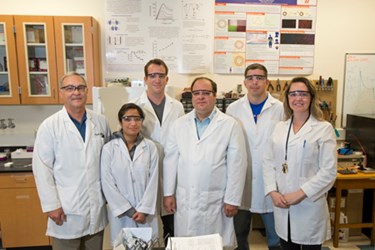Combining The Power Of Chemotherapy With The Precision Of Radiotherapy
By Chuck Seegert, Ph.D.

Chemotherapy and radiation have been used to treat cancer for some time, but the systemic effects of toxic therapeutic drugs are a major risk in this sort of treatment. Currently, researchers from Boise State University are working to address the issue by developing contained liposome cancer therapy that would eliminate cancer cells more effectively and spare healthy tissue.
Chemotherapy and radiation therapy are two of the most widely used forms of cancer treatment in modern medicine. Radiation dosage can effectively target cancer, thus destroying diseased tissue while sparing healthy tissues. Chemotherapy, on the other hand, is a systemic treatment that kills cancer cells along with healthy cells. Because of this toxicity, radiation and chemotherapy are generally administered serially, although it would be ideal to use them in conjunction.
In order to develop a combination treatment, the Boise State researchers used liposomes containing a chemotherapeutic agent to get the chemical to be preferentially taken up by the tumor and released when exposed to radiation, according to a recent press release.
“The liposomes are designed to release their precious cargo upon exposure to x-ray. Not only does this target where the medication goes, it also allows for a huge concentration of the drug to be released at once at the tumor site, thus increasing its efficacy,” said professor Daniel Fologea, a biophysicist at Boise State, in the press release. “In addition, this combined modality of treatment employing concomitant radio and chemotherapy is supra-additive, which means it is several times more efficient than each therapy applied alone.”
The liposomes were designed with scintillating nanoparticles embedded in their walls, according to the press release. When exposed to X-rays, they emit ultraviolet light, which, in turn, releases calcium ions that drive an enzymatic reaction to break down the liposome walls. The drug is then rapidly released, but only in the area where the radiation has been delivered.
Targeted cancer therapy using nanoparticles is a fruitful area of research in biomedicine. In a recent article on Med Device Online, nanoparticles were shown to locally target tumor cells when exposed to near infrared light, while being inert elsewhere in the body.
Image Credit: Boise State University
